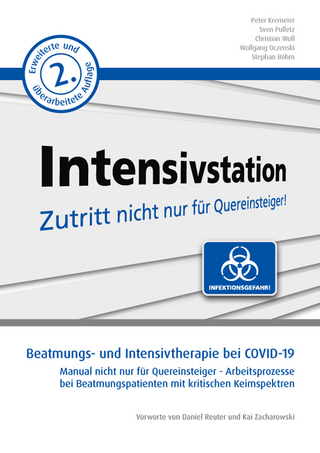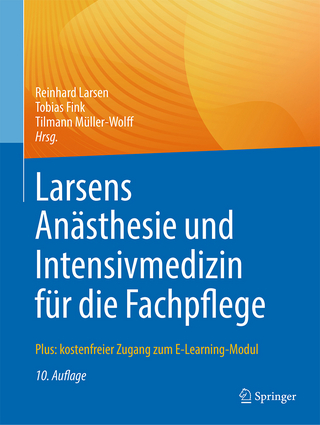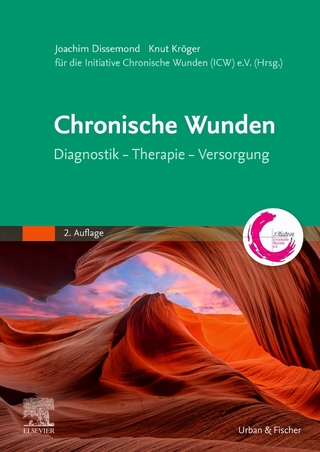
Introduction to Critical Care Nursing
Elsevier - Health Sciences Division (Verlag)
978-0-323-74973-2 (ISBN)
- Titel erscheint in neuer Auflage
- Artikel merken
Critical Reasoning Activities are included throughout the text, promoting development of clinical nursing judgment to help you prepare for the Next-Generation NCLEX-RN® Exam.
Emphasis on QSEN competencies enables you to gain the knowledge, skills, and attitudes needed to provide safe, high-quality health care in a variety of high acuity, progressive, and critical care settings.
Evidence-Based Practice boxes illustrate how research evidence is used to address problems in patient care and includes nursing implications plus AACN’s new system for Levels of Evidence: A, B, C, D, E, and M.
Universal Collaborative Plan of Care for the Critically Ill Patient addresses key aspects of collaborative/interprofessional care that apply to virtually all critically ill patients.
Individual Plans of Care prepare you for clinical practice by describing patient problems, patient outcomes, and nursing assessments and interventions with rationales.
Case studies challenge you to apply concepts to the real world, testing your clinical nursing judgment by asking questions about patient-specific cases with lab results.
Clinical Alerts highlight potential problems and concerns to improve patient safety and clinical care.
Laboratory Alerts emphasize the importance of laboratory test results to critical care nursing.
Medication tables show the actions/usages, indications, dosages/routes, side effects, and nursing implications of medications commonly used in critical care settings.
Coverage of cardiac assistive devices includes the ECMO device for extracorporeal life support, as well as other small, portable, bedside cardiac-assistive devices.
Hemodynamic monitoring content now emphasizes the noninvasive methods of hemodynamic monitoring that are becoming more prominent.
Coverage of infection control addresses the QSEN safety competency and helps provide patient protection against the growing threat of drug-resistant infections.
Nearly 300 full-color photographs and drawings visually clarify key concepts and equipment for better understanding of today’s complex critical care environment.
NEW! Study Break questions in multiple-choice format break up the chapters into easy-to-read content "chunks" and make it easy to check your understanding, with answers and rationales in the back of the book.
NEW! Transplant Considerations boxes highlight essential information related to patient care in preparation for organ transplantation, managing complications, and preventing rejection; coverage of palliative care supports the text's strong focus on end-of-life care; and the revised Organ Donation chapter focuses on a practical evaluation of dying patients for organ donation and preservation.
UPDATED! Illustrations include photos of state-of-the art equipment to familiarize you with the modern, high-tech critical care environment.
NEW! Emphasis on patient problems (in lieu of NANDA diagnoses) promotes interprofessional collaborative practice by using terms that are easily understood by various members of the healthcare team.
NEW! Enhanced, application-level questions on the companion Evolve website emphasize prompt recognition of changing trends in patient parameters.
UPDATED! Lifespan Considerations boxes now include information on older adults, addressing the "graying of our population," and pregnant women.
UPDATED! Genetics boxes feature a new Genetic Concepts box.
PART I: FUNDAMENTAL CONCEPTS
1. Overview of Critical Care Nursing
2. Patient and Family Response to the Critical Care Experience
3. Ethical and Legal Issues in Critical Care Nursing
4. Palliative and End-of-Life Care
5. Organ Donation
PART II: TOOLS FOR THE CRITICAL CARE NURSE
6. Comfort and Sedation
7. Nutritional Therapy
8. Dysrhythmia Interpretation and Management
9. Hemodynamic Monitoring
10. Ventilatory Assistance
11. Rapid Response Teams and Code Management
PART III: NURSING CARE DURING CRITICAL ILLNESS
12. Shock, Sepsis, and Multiple Organ Dysfunction Syndrome
13. Cardiovascular Alterations
14. Nervous System Alterations
15. Acute Respiratory Failure
16. Acute Kidney Injury
17. Hematological and Immune Disorders
18. Gastrointestinal Alterations
19. Endocrine Alterations
20. Trauma and Surgical Management
21. Burns
| Erscheinungsdatum | 02.09.2020 |
|---|---|
| Verlagsort | Philadelphia |
| Sprache | englisch |
| Gewicht | 1340 g |
| Themenwelt | Pflege ► Fachpflege ► Anästhesie / Intensivmedizin |
| ISBN-10 | 0-323-74973-9 / 0323749739 |
| ISBN-13 | 978-0-323-74973-2 / 9780323749732 |
| Zustand | Neuware |
| Haben Sie eine Frage zum Produkt? |
aus dem Bereich



